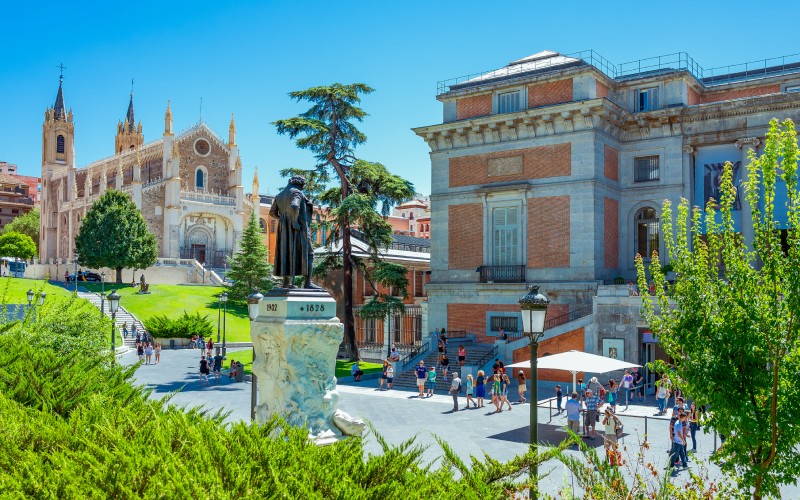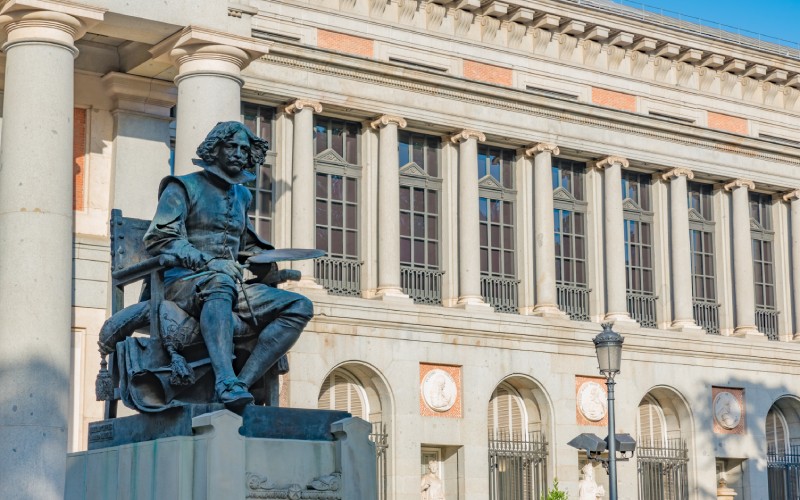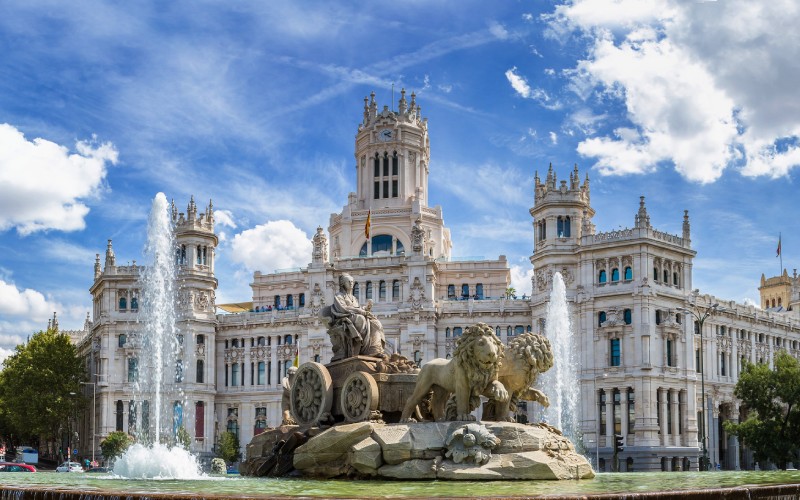
Paseo del Prado is one of the most vibrant boulevards in Madrid. The history of this broad avenue goes back to the late 16th century, when Madrid was declared the capital of the kingdom at the expense of Toledo. Under the reign of Philip II of Spain, the city began to shine with a light it has not lost since. It was his idea to turn this area—formerly known as Prado Viejo or “old field”, due to the fields that used to spread eastwards—into a place for walks and leisure. They planted a row of trees there and, little by little, the monuments we can admire today populated the avenue.

Prado Museum. | Shutterstock
Our walk through Paseo del Prado might start at the square of Charles V, Holy Roman Emperor—best known as the roundabout of Atocha. In fact, there lies the famous train station of Atocha, which has been active since 1851. This square stands out for the social life always gathering around it.
Moving north, the Royal Botanical Garden of Madrid awaits us between nature and history. Ferdinand VI founded it in 1755, in the grove of Migas Calientes, near the river Manzanares. However, Charles III of Spain relocated it almost thirty years later. Back then, they were building the Museum of Natural Sciences, which would eventually become the current Prado Museum. Moreover, in honor of this monarch, they built the beautiful gate of Charles III, which is facing the boulevard and we can still admire today.

Prado Museum. | Shutterstock
The Prado Museum is not only one of the main attractions of the avenue, not even of Madrid: it is one of the most important landmarks of the art scene worldwide. The Royal Painting and Sculpture Museum, as they first named it, opened in November 1819. It still keeps the most comprehensive collection of Spanish art in the world, as well as many exhibitions that take us to different countries, continents, and centuries.
The Fountain of Neptune, standing in front of the museum, marks the end of the first section of this tour. This sculpture was commissioned to Juan Pascual de Mena, but he died before he could finish it. It is said that his disciple, José Arias, was the one in charge to do it. From the rock emerges a shell-shaped carriage with Neptune riding on it. The carriage has two hippocampi, mythological creatures that are usually linked to the Roman god. This is one of the most iconic sculptures of Madrid, and it was finished in 1786.

Fountain of Neptune. | Shutterstock
After the Fountain of Neptune, we will visit one of the most emblematic monuments in the city. The Monument to the Fallen for Spain (originally in Spanish, “Monumento a los Caídos por España”) honors the Spanish soldiers that died on 2 May 1808 defending the capital against the invasion of the troops of Napoleon, marking the beginning of the Peninsular War.
The first stone of the Monument to the Fallen for Spain was placed in 1821, but it was not inaugurated until 1840, at the exact place where the French General Murat ordered the execution of several citizens of Madrid. The architect behind this monument was Isidro González Velázquez.
On another note, the Thyssen-Bornemisza Museum was founded in 1992, and its art collection includes all the works the family of the same name gathered through seven decades. There are more than 1000 pieces that go from the Middle Ages to the late 20th century, with temporary exhibitions that allow us to keep in touch with history. It is a must-see for those who are interested in art.

Fountain of Cybele. | Shutterstock
We should also stop and admire the fountain of Apollo, commissioned by the royal family with the aim of depicting the values of the Age of Enlightenment from the late 18th century. After a construction that lasted for more than twenty years, it was finally inaugurated in 1802. It is one of the most remarkable instances of Neoclassical art in Spain.
Nevertheless, at the end of the day, only the Fountain of Cybele will attract all eyes. It used to face the Fountain of Neptune, but they relocated it at the end of the 19th century. Originally, it had two pipes that supplied the city with water. The architect who designed it was Ventura Rodríguez, although he was not the only one that worked on the project. Just like the Fountain of Neptune, it is one of the most symbolic elements of the city, and the end of this walk through a priceless World Heritage Site in Madrid.